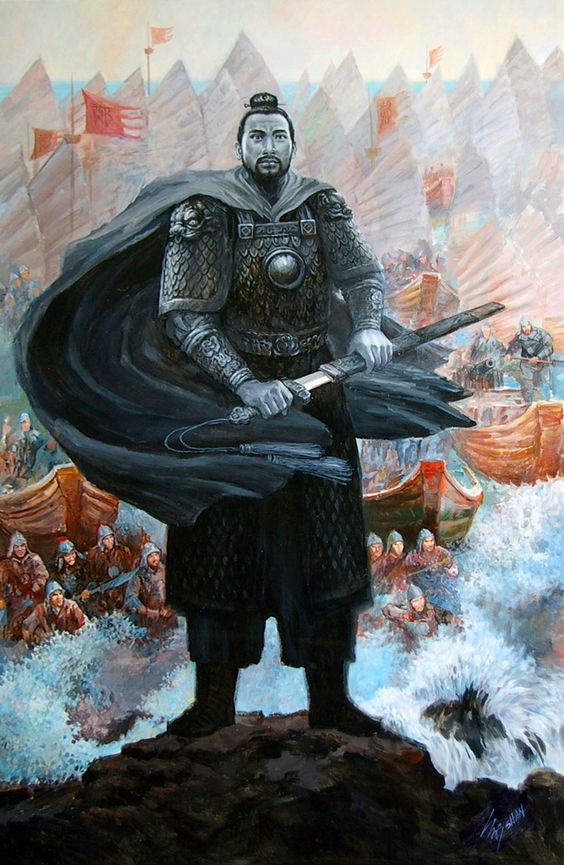 |
| Zheng Chenggong |
Zheng Chenggong (or Koxinga) led the longest and most sustained opposition to the Qing (Ch’ing) conquest of China, first from the southern Chinese coast, later from Taiwan after he expelled the Dutch from their forts on the island. His sons held on to Taiwan against Qing forces until 1683.
The Ming dynasty (1368–1644), long in decline, collapsed in 1644, when the last emperor and his family killed themselves rather than suffer capture by the rebel forces of Li Zicheng (Li Tzu-ch’eng).
General Wu Sangui (Wu San-kuei), the Ming general guarding the eastern terminus of the Great Wall of China, then asked the Manchus in the northeast to help him to oust the rebels. As Wu pursued the rebels, the Manchu leader, Prince Dorgon, installed his nephew on the vacant throne as Emperor Shunzi (Shun-chih) of the Qing dynasty.
  |
While northern China was quickly pacified, Ming loyalists resisted tenaciously in the Yangzi (Yangtze) River valley and throughout southern China. Several Ming princes were elevated to be emperors or “caretaker rulers” to rally loyalists against the alien rule. The era up to 1662 is called the Southern Ming when the last Ming pretender was killed.
An important supporter of the first Southern Ming emperor was Zheng Zhilong (Cheng Chihlung), who controlled a powerful mercantile empire and large fleet that operated along the southern coast of China and Japan.
One of his sons by a Japanese mother so impressed the Ming prince of Tang (T’ang) who became the Longwu (Lung-wu) emperor that in 1646 he conferred on him the imperial surname Zhu (Chu) and also gave him the name Chenggong which means “successful.”
He came to be known as Lord of the imperial surname, from which the Dutch derivation Koxinga comes. In China he was called Zheng Chenggong. Zheng Zhilong defected to the Manchus in 1646, but his son remained faithful to his pledge to defend the Ming.
With his base in Amoy and the nearby island of Jinmen (Quemoy), Zheng gained control of Fujian (Fukien) province. He also expanded his trading empire to raise revenue for his cause. In 1658, his fleet of 1,000 ships and 130,000 soldiers raided the coast of Zhejiang (Chekiang) province.
It sailed up the Yangzi River in 1659 to attack Nanjing (Nanking), the southern capital of the Ming dynasty, hoping that the action would rally Ming loyalists to rise up in rebellion. It did not happen and facing Qing counterattack he withdrew across the sea to Taiwan.
There he forced the Dutch East India Company (Indonesia/Batavia) to surrender its Fort Zeelandia in southern Taiwan, ending its presence on the island. Zheng died in 1662 (his father and some relatives who had surrendered to the Qing were executed in 1661 for failing to persuade him to surrender), but his son Zheng Ching continued to resist.
To deprive the Zheng forces from obtaining supplies from the mainland coast the Qing had to adopt draconian measures, forcing inhabitants in Fujian to relocate at least 20 miles inland and forbidding ships to take off from southern coastal ports. In 1683, Taiwan was conquered by the Qing and made a part of Fujian Province. With the fall of Taiwan the Qing dynasty completed the conquest of China.
Zheng Chenggong, or Koxinga, is honored in Chinese and Japanese folklore as a brave commander. He is also respected as a Ming loyalist.